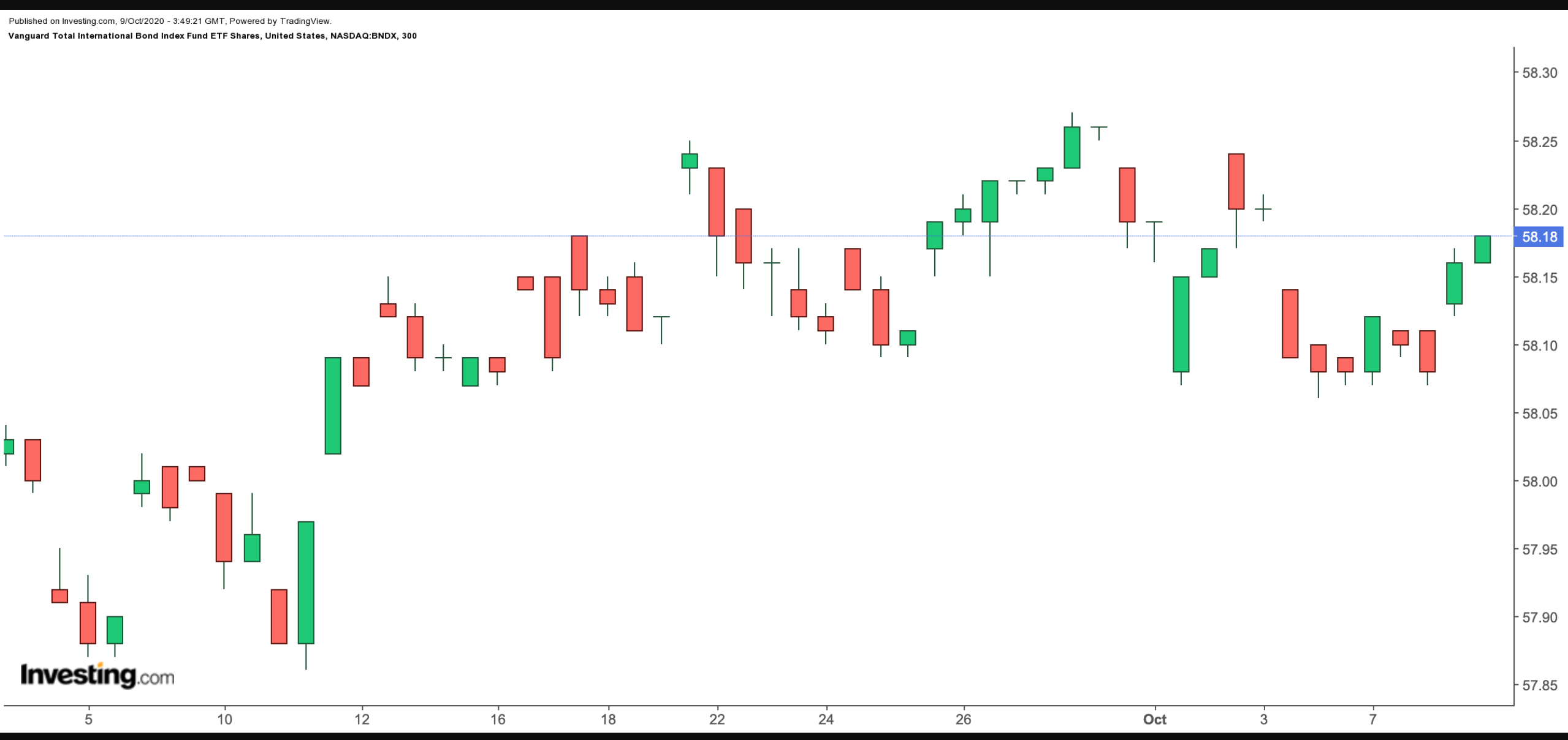Exchange-traded funds (ETFs) enable market participants to trade baskets of assets in single transactions on formal exchanges. Today, we re-visit the topic of bond ETFs and introduce several funds that may be appropriate for a range of portfolios.
Why Invest In Bond ETFs?
A large number of investors buy bond ETFs as they provide diversification and decrease the volatility of a given portfolio. General investing wisdom says stocks and bonds are inversely correlated. Put another way, bonds rise when stocks fall.
Bond ETFs typically provide exposure to some combination of government, municipal and corporate bonds. They may also be part of a hybrid structure, where the ETF has bonds, equities and other asset classes (such as commodities and REITs). As a result, market participants can use bonds to fit a range of investment objectives and styles.
Like other exchange-traded funds, a bond ETF tracks a specific bond index. As the profile of the index changes, fund managers replace assets that do not match the index. This active management also ensures the fund's duration typically stays within limits given in the ETF's prospectus.
Investors are likely to observe differing liquidity in shares of bond ETFs. The daily closing bid-ask spread would be an indication of how liquid the fund is. In general, treasury bond ETFs have the smallest closing bid-ask spreads. Next in line tend to be corporate bond ETFs, followed by municipal bond ETFs.
Vanguard Total International Bond ETF
Current Price: $58.18
52-Week Range: $53.89-$58.94
30-Day SEC Yield: 0.31%
Expense Ratio: 0.08%
The Vanguard Total International Bond ETF (NASDAQ:BNDX) provides exposure to non-U.S. dollar-denominated investment-grade bonds. Because about 96% of the current allocation is outside of the States, the fund hedges against currency rate fluctuations, too. Fund managers highlight that the legally-reported SEC yield (currently 0.31%) does not reflect potential returns due to currency hedging.

BNDX, which holds 6,304 bonds, tracks the Bloomberg Barclays Global Aggregate ex-USD Float Adjusted RIC Capped index. Net assets stand at $154 billion. The portfolio is tilted toward Europe (58.7%), followed by Pacific (24.1%) and the rest of the world. Close to three-quarters of its holdings are in government debt. Thus, BNDX has a low credit risk, but is sensitive to changes in interest rates in these regions.
As the SEC reminds investors,
"market interest rates and bond prices generally move in opposite directions."
Most countries currently have low interest rates. However, if inflation levels go up in these countries, then governments may start to increase interest rates, which would affect the value of the fund.
Year-to-date, the fund is up around 2.7%. In the early weeks of the pandemic, volatility levels shot up and market participants got out of most asset classes. Then came stimulus measures by the Fed that ended up supporting investment-grade corporate bonds as well as treasuries, municipal bonds and even junk bonds. As a result, most bond ETFs, including BNDX, have recovered from the lows hit in March.
Other Bond ETFs
The ETF market offers diverse funds that are likely to appeal to different market participants. For example, the iShares ESG USD Corporate Bond ETF (NASDAQ:SUSC) adds the environmental, social and governance (ESG) dimension to bond investing. The fund gives exposure to U.S. dollar-denominated corporate bonds from issuers with strong ESG practices. The fund has 3,549 holdings and close to $600 million in net assets.
The iShares iBoxx $ High Yield Corporate Bond ETF (NYSE:HYG), which provides access to a range of U.S. high-yield corporate bonds (i.e., junk bonds), is an actively-used fund. Investors may want to research such bonds' risk/return profile before hitting the "buy" button. Many analysts wonder if we will likely see more defaults in the high-yield space in the quarters ahead. In such a case, the income from the fund would come under pressure.
On the other hand, the Aptus Defined Risk ETF (NYSE:DRSK) takes a hybrid approach to achieve income and capital appreciation. The fund invests around 90-95% of assets in investment-grade corporate bonds. The rest is invested in long-term in-the-money call options on a range of large-capitalization (cap) stocks and sectors.
Bottom Line
Finally, for those who do not think now is the time to go long on bond ETFs, there are a number of inverse ETFs that make it possible to speculate on daily down moves.
For example, the ProShares Short 20+ Year Treasury (NYSE:TBF) aims to achieve daily investment results that equate to the inverse (-1x) of the ICE U.S. Treasury 20+ Year Bond Index. Similarly, the ProShares Short High Yield (NYSE:SJB) to the inverse (-1x) of the Markit iBoxx $ Liquid High Yield Index's daily performance. It would be important to remember that such funds should only be used by experienced traders who want to speculate daily.
